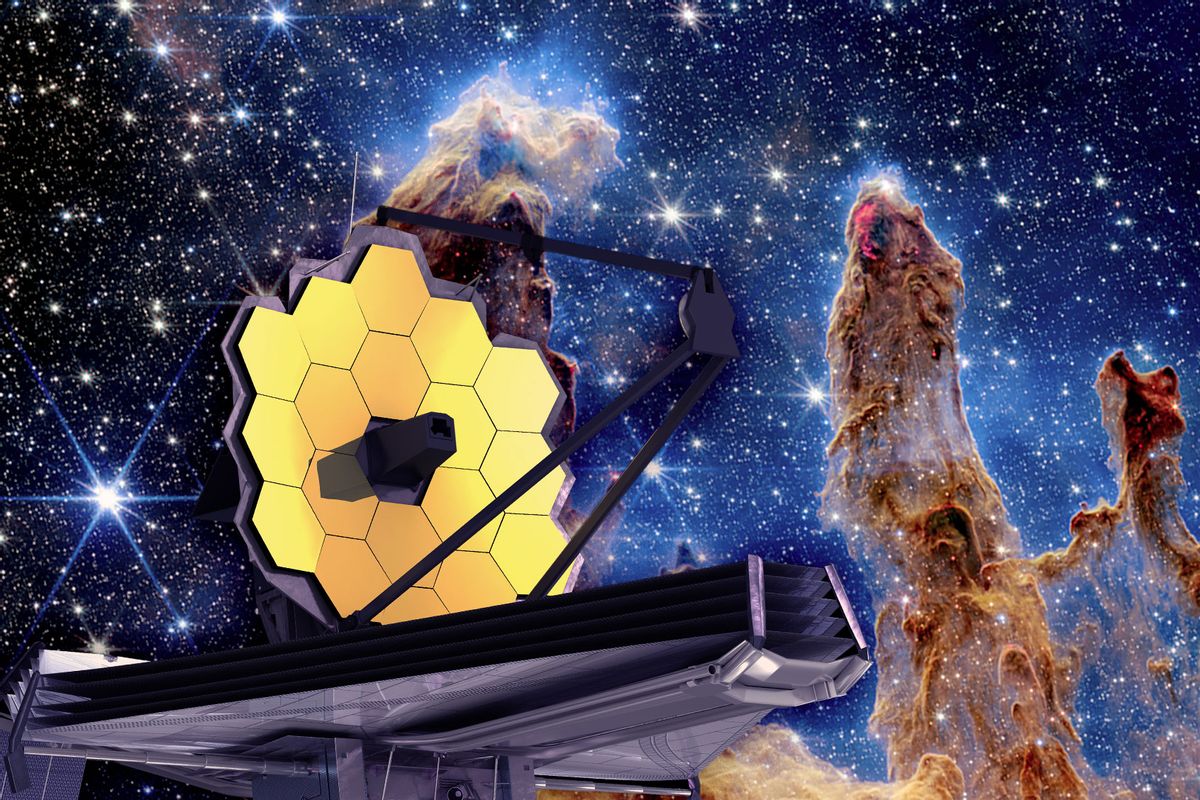
It’s been a little over a week since the Independence Day celebrations, but the crowd that packed in NASA agency Goddard Space Flight Center in Greenbelt, Maryland, was the same Joy Like any audience at a fireworks show. They’ve been there because the James Webb Space Telescope (JWST), a technological marvel launched last December, has finally sent back gorgeous, detailed images of the universe. Now, the crowd was about to see them for the first time — and literally witness history in the making.
Since that historic day in 2022, NASA has released more and more images of JWST, and both astronomers and ordinary people have been amazed again and again. Considering that the telescope cost a total of $10 billion by the time construction was completed in 2016, it’s a relief that the telescope finally lived up to the hype.
To celebrate this milestone in astronomy, we’ve rounded up seven of JWST’s most memorable images from 2022—its first year in operation. They range from images of the most distant galaxies ever seen to snapshots of our solar system at unprecedented depth.
1. SMACS 0723
NASA’s James Webb Space Telescope has produced the deepest and sharpest infrared image of the distant universe yet. Known as Webb’s first deep field, this image of the galaxy cluster SMACS 0723 shows detail. (NASA, ESA, Canadian Space Agency, and STScI)To start this list off properly, let’s start with SMACS 0723, as that was the first full-color JWST-produced image. More importantly, SMACS 0723 is the clearest, most complete infrared image of the universe ever captured by a telescope.
said Bill Nelson, NASA Administrator statment.
Historically, infrared light has been the hardest part of the electromagnetic spectrum for astronomers to monitor — at least, from Earth. Earth’s heat generates infrared light of its own, which then scatters throughout the atmosphere, making it nearly impossible for astronomers to see with infrared radiation from ground-based telescopes. However, the JWST is freed from the confines of Earth, and thus, the need to peer through Earth’s infrared light.
2. The Carina Nebula
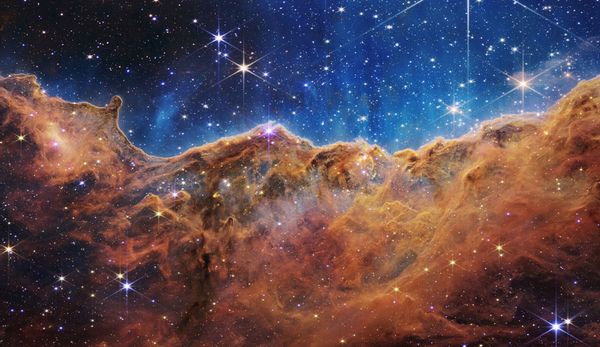
Technically known as NGC 3324, this part of the Carina Nebula appears at first glance as an edited image of a drone looking down at where beach meets ocean. However, the red-brown “sand” in this image, and the blue “water”, are actually single stars mixed in a budding stellar nursery. The Carina Nebula isn’t too far away (especially compared to the previous image): it’s part of our own Milky Way, specifically in the Carina Sagittarius Arm. This vantage point is also known as the Cosmic Cliffs.
“These observations of NGC 3324 will shed light on the star formation process. Star births are spread over time, due to the expansion of the eroding cavity,” NASA writes. “As the bright ionized edge moves into the nebula, it slowly erupts gas and dust. If the edge encounters any unstable material, the increased pressure will cause the material to collapse and new stars to form.”
3. Stefan Quintet
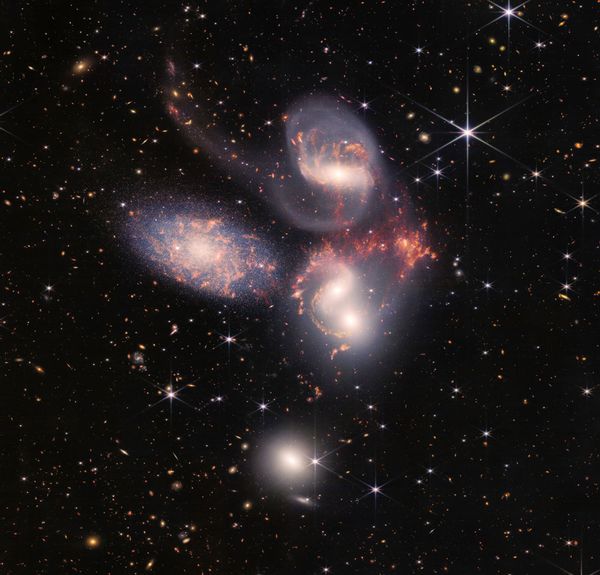
Located in the constellation of Pegasus — named after the famous winged horse from Greek mythology — the Stefan quintet is more or less what it sounds like: a group of five galaxies, four of which make up the first compact cluster of galaxies ever discovered. Thanks to JWST, scientists can view these galaxies and the celestial bodies around them in unprecedented detail. The images reveal that two of the galaxies are currently merging with each other, and give us insight into how galactic interactions can lead to star formation.
“The image also shows outflows propelled by a black hole in the Stephane Quintet at a level of detail never seen before,” NASA’s communications team said of the image.
4. The Tarantula Nebula
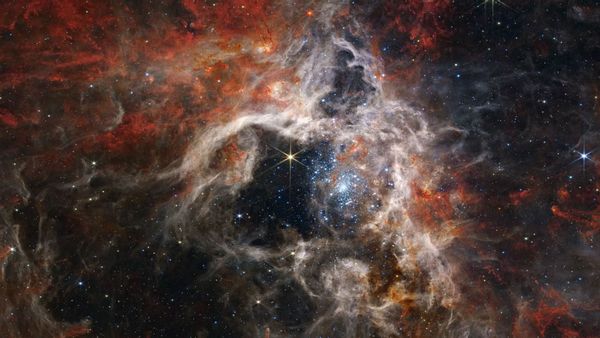
This is a photo of the Tarantula Nebula, also known as 30 Dorados, although many have likened it to an abstract image of a cross-legged man. In fact, this is another interstellar nursery, captured in unprecedented detail due to JWST’s infrared cameras. The Tarantula Nebula can be found about 161,000 light-years from Earth in the Large Magellanic Cloud. He is famous for hosting Black hole VFTS 243, the first to be discovered outside the Milky Way and not radiate strongly. The hottest and most massive stars known to mankind can also be found in the Tarantula Nebula.
“The cavity of the nebula centered in the NIRCam image has been blasted by an emission of radiation from a cluster of young, massive stars, which glisten pale blue in the image,” NASA explained on its website. “Only the denser surroundings of the nebula resist erosion by the strong stellar winds of these stars, forming pillars that appear to point back toward the cluster. These pillars contain primordial formations, which will eventually emerge from their dusty cocoons and take a turn in forming the nebula.”
5. The Southern Ring Nebula
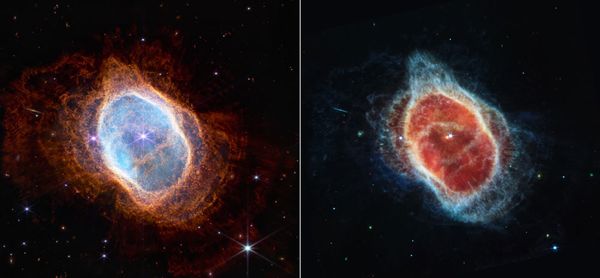
In fact, this is a nebula – the Southern Ring Nebula, to be exact.
Officially known as NGC 3132, the planetary nebula is created when a dying star ejects large amounts of mass over a period of successive waves, like the ones we see in these images. This image is notable for its interesting backstory: After it was fired, astronomers settled on narrow filaments near the radially aligned apex of the nebula that appear blue in the near-infrared image. While some scientists don’t think it’s a remarkable thing, others think it could be the edge galaxy. Upon further investigation, it was revealed that these filaments were indeed a galaxy on the edge.
Thanks to more recent research from JWSTScientists now also know that “there were at least two, possibly three, more invisible stars that made up the oblong and sinuous shape.” Southern Ring Nebula. In addition, for the first time, by pairing Webb’s infrared images with existing data from the European Space Agency’s (ESA) Gaia Observatory, researchers have been able to accurately determine the mass of the central star. Before creating a nebula.”
6. The “Exciting” Southern Ring Nebula
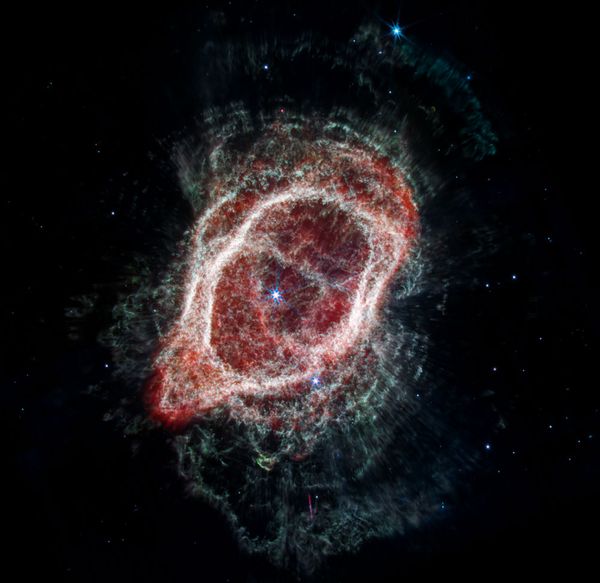
JWST took another image of the aforementioned nebula with a different wavelength camera, and in the process, astronomers discovered something they didn’t previously know about the astronomical object — namely, that there are at least two or three invisible stars that helped form the nebula. as we know it today.
regarding this photo, NASA website It explains that “the Webb image tracks the star’s scattered molecular fluxes that have reached farther into the universe” and that “the blue and green colors are assigned to Webb’s near-infrared data taken at 2.12 and 4.7 microns (F212N and F470N), and the red colors are assigned to Average infrared web data taken at 7.7 µm (F770W). In addition, astronomers combined JWST data with information from the European Space Agency’s (ESA’s) Gaia Observatory to figure out the exact mass of the central star before it created the nebula.
7. A new look at Jupiter
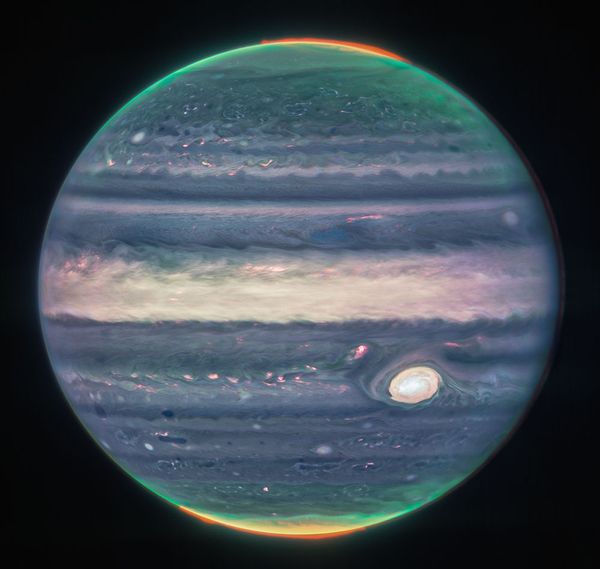
Jupiter It is the largest planet in our solar system and the fifth planet from the sun. When you visualize it, your mind will likely imagine a giant ball with red, orange, white, and yellow bands. You’re also definitely considering the Great Red Spot south of the equator.
Using three specialized infrared filters, JWST gave us new data on Jupiter in 2022, measuring different wavelengths of light emitted from the atmosphere. After translating that data into images—using false colors, as humans can’t see in infrared—NASA scientists have created an unprecedented, detailed view of Jupiter. This allows viewers to see auroras, or beautiful light shows that appear in the sky, as they are found in Jupiter’s atmosphere. It also shows winds, storms, high and low temperatures.
Read more
About the James Webb Space Telescope:

“Web maven. Infuriatingly humble beer geek. Bacon fanatic. Typical creator. Music expert.”





More Stories
NASA Close to Deciding What to Do With Boeing’s Troubled Starliner Spacecraft
Scientists May Have Discovered ‘Dark Oxygen’ Created Without Photosynthesis: NPR
Real Scientists Lived on Fake Mars in a Texas Shed for a Year